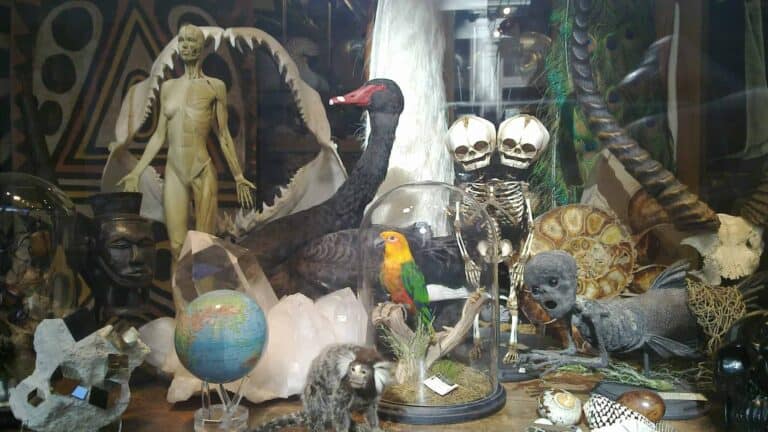The intriguing concept of the cabinet of curiosities has captured the human imagination since its emergence in the 16th century. Walking the fine line between eclectic fascination and educational endeavour, these remarkable collections laid the foundations for the modern museum. They embodied the human quest for knowledge and innate curiosity about the world, assembling an astonishing variety of objects ranging from exquisite artefacts and masterful works of art to natural anomalies and groundbreaking scientific instruments.
This age-old tradition of collecting and displaying the wonders of the natural and man-made world not only satisfied the intellectual appetite of the age, but also laid the foundations for prestigious institutions such as the British Museum. The latter, now a hallmark of cultural preservation, emerged from these very cabinets, demonstrating the enduring legacy of the cabinet of curiosities in shaping our understanding and appreciation of history and science.
The origins and development of the cabinet of curiosities
Cabinets of curiosities emerged during the Renaissance, a period characterised by a renewed interest in the natural world and the artefacts of distant lands. These collections were initially private, assembled by monarchs, aristocrats and scholars who had the means to acquire such diverse treasures. They were part curiosity, part status symbol, demonstrating the wealth, education and taste of the owner. The cabinet of curiosities was both a personal encyclopaedia of the world and a place of entertainment and learning, inviting contemplation and wonder at the complexities of the universe.
Iconic examples throughout history
One of the most famous early cabinets was that of Ferdinand II, Archduke of Austria, famous for his Kunst- und Wunderkammer. This collection was notable for its paintings of people with physical deformities, among other curiosities, reflecting the era’s fascination with the unusual and otherworldly.
In modern times, the Museum of Jurassic Technology in Los Angeles represents a conscious effort to recapture the essence of the cabinet of curiosities. It blurs the lines between the real and the fabricated, creating a space that challenges visitors’ perceptions and encourages wonder.
The British Museum’s Enlightenment Gallery pays homage to its roots as a cabinet of curiosities. Opened in 2003, the gallery aims to recreate the eclectic spirit of an 18th-century museum, with a wide range of objects, from natural specimens to classical sculptures, reflecting the era’s quest for knowledge and understanding of the world.
The Wunderkammer today
Today, the spirit of the Wunderkammer lives on in many forms. The Evolution Store in New York City is the retail equivalent, offering the public a range of natural and scientific curiosities, from taxidermy animals to fossils and anatomical models. Similarly, the House On The Rock museum combines real and fabricated objects, offering a modern take on the cabinet of curiosities’ tradition of mixing the real and the fantastic.
Dresden’s Green Vault (Grünes Gewölbe), known as a walk-in treasure chest, bridges the gap between the historical Wunderkammer and the contemporary museum. It displays an astonishing array of treasures, from precious gems to exquisite works of art, housed in a meticulously restored Baroque palace.
The tradition of the Kunstschranke, or miniature Kunstkammer, further illustrates the evolution of the cabinet of curiosities. Conceived by the merchant prince and diplomat Philipp Hainhofer, these smaller cabinets were the forerunners of today’s curio cabinets, compact yet full of a diverse range of objects intended for both education and enjoyment.
The legacy and enduring appeal
The enduring appeal of the Wunderkammer lies in its ability to inspire wonder and curiosity. These collections are a reminder of the human desire to understand and categorise the world, bridging the gap between art and science, the natural and the artificial. They reflect a time when the world was still being mapped and its contents discovered, evoking a sense of mystery and the thrill of exploration.
The Wunderkammer also emphasises the importance of observation and the gathering of knowledge. In a time before digital information, these cabinets were essential tools for learning about the world’s diversity. Today, they remind us of the value of the tangible and the real in an increasingly virtual world.
As we continue to explore and understand our world, the concept of the Wunderkammer serves as a source of inspiration. It encourages us to look closer, to appreciate the wonder in the everyday and to remain curious about the unknown. The legacy of the cabinet of curiosities is a testament to the insatiable curiosity of the human spirit, a trait as vital today as it was in the 16th century.



